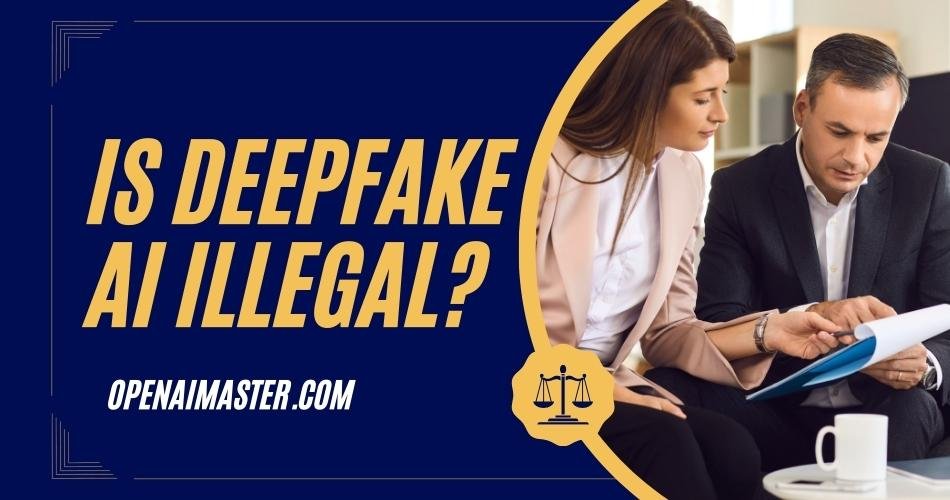[ad_1]
The Internet offers a wide variety of content, some harmlessly fun and some incredibly harmful. Deepfakes occupy an uncomfortable middle ground, raising complicated questions about consent, misinformation, and the law.
What are deepfakes?
Deepfakes refer to synthetically generated or altered video, image and audio content created using powerful AI techniques. They are created by feeding huge data sets of images, videos and audio into machine learning algorithms that can gradually learn to mimic a person’s likeness, voice and mannerisms.
The output can be surprisingly realistic, seamlessly grafting a person’s face onto another body or putting words into their mouths through synthesized speech. While deepfake technology has legitimate applications in film and academia, it also has enormous potential for abuse.
Most infamously, it has been used to create non-consensual intimate images of celebrities. However, deepfakes can also be used to spread political disinformation by getting leaders to say things they never did. With technology developing rapidly, it is becoming incredibly difficult to distinguish deepfakes from real content.
Also read: How do you prevent AI from creating deepfakes?
Are deepfakes currently illegal?
The legal status of deepfakes is complicated, without much direct legislation specifically aimed at it. Their legality depends on the context, motivation and jurisdiction. Some key factors:
- Non-consensual intimate images are illegal in many places. Deepfake porn created without consent clearly violates consent and violates anti-revenge porn regulations.
- Impersonation, fraud, defamation and political sabotage may be illegal. The use of deepfakes for deception or reputational damage exceeds legal boundaries in some cases.
- Outright political bans are unconstitutional in countries like the US. Efforts to limit the spread of deepfake face steep hurdles, given protections for freedom of speech and expression.
- Proving harm and malicious intent is a challenge. Regulating deepfakes requires demonstrating concrete damage. But the consequences are often diffuse, indirect and cumulative over time.
- Most laws relate to usage, not the content itself. It is virtually impossible to completely ban deepfakes. But certain malicious applications can be addressed through existing frameworks.
- Regulation has not kept pace with technology. Deepfakes have emerged faster than governments can implement tailored policy measures to address them. There are major gaps in the legislation.
So deepfakes currently fall into a messy gray area. While some blatant uses are illegal, regulations are fragmented and full of loopholes. Governments are scrambling to keep up with the dizzying pace of technological change.
Also read: Best Deepfake Voice Generator Free 2023
Why are deepfakes problematic?
There are several reasons why deepfakes cause problems:
- Non-consensual pornographic deepfakes are a blatant violation of privacy and consent. Converting someone’s likeness into an explicit video without consent is extremely unethical and traumatic for the victims.
- Political deepfakes undermine trust in leaders and institutions. Putting words or actions into a politician’s mouth can sabotage careers. Even if it is proven to be false, the damage has already been done.
- Deepfakes make disinformation campaigns more effective. Manipulated imagery allows malicious actors to more convincingly spread false stories online and offline. Visuals provide credibility.
- Deepfakes undermine confidence in the authenticity of digital media. As deepfake technology improves, people are losing confidence in whether a video or image is real. This is enormously destabilizing for informed public debate.
- Impersonation and fraud become easier. Realistic deepfakes could enable the impersonation of figures for criminal gain through speeches, phone calls or videos.
- Accountability is more difficult. As deepfakes get better, it becomes incredibly difficult to prove a case of tampering, even if it is suspected. Which could make abuse possible.
In general, deepfakes take advantage of ambiguity to be maximally damaging. Even if they are ultimately refuted, the window in which they appear plausibly real is sufficient.
also read: How to use Artguru AI for face swap?
What can be done?
Tackling the spread of harmful deepfakes requires a multi-pronged approach:
- Platform moderation policies of social networks and websites to quickly remove malicious deepfakes. But it is a huge challenge to stay abreast of new manipulations.
- Enhanced deepfake detection technologies via AI and blockchain-based media authentication. This arms the audience with better tools for skepticism about the provenance of the content.
- Increased legal protections specifically related to synthetic media and clear definitions of what constitutes fraud, defamation and privacy violations using deepfakes.
- Public information campaigns to increase awareness and critical thinking around deepfakes. Media literacy is critical so that people question the veracity of what they see online.
- Ethical guidelines for the development of synthetic media, recognizing potential harms and ways to mitigate them through best research practices.
- International cooperation to align policies and standards across borders. Deepfakes spread too easily for fragmented regulation.
The goal must be a balanced policy that enables innovation and freedom of expression, but also tackles real dangers. It’s a difficult line to walk, but with care and nuance, societies can reap the benefits of new technologies while reducing their risks. The future remains unwritten.
The way forward must build societal resilience against untruths – a challenge, but one that thoughtful, evidence-based policies can help overcome. With vigilance and wisdom, truth and trust can prevail over misinformation.
Conclusion:
The rise of deepfake technology has outpaced our willingness to deal with its implications. These AI-powered synthetic media manipulations are testing legal boundaries and straining social norms. Deepfakes currently exist in an ill-defined gray zone – not entirely illegal in many contexts, but still deeply unethical and harmful in countless ways.
As deepfakes become more sophisticated, we urgently need updated policies, technological tools, educational efforts, and ethical principles to help maintain trust in our information ecosystem. But finding the right balance remains a complex challenge. Overly suppressing new technologies contradicts basic civil liberties. However, unrestricted proliferation also poses risks to privacy, consent, and truth in the public sphere.

